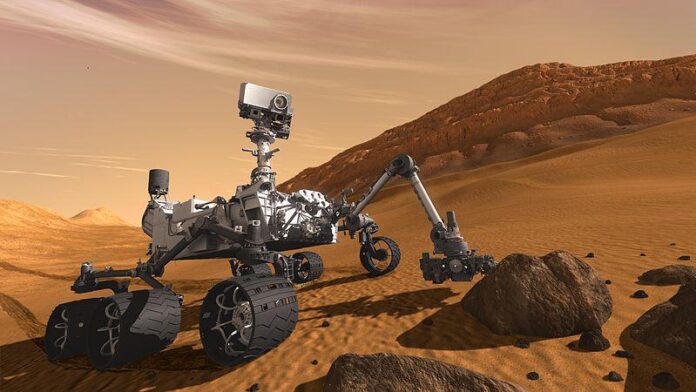On August 6, 2012, the Curiosity rover landed on the red planet. 10 years later, this is an opportunity for NASA and the National Center for Space Studies (CNES) to come back to the discoveries of the solitary robot. “Curiosity was sent to Mars to answer a big question: Were all the ingredients in place to support life?” described in a video from NASA Abigail Fraeman, Curiosity’s deputy chief scientist. “After a decade, not only can we answer a definite yes, but we also discovered that these ingredients have been there for tens of millions of years.” Knowing whether Mars was inhabited remains a mystery to be discovered, but it is now certain that it “presents the conditions favorable to the emergence of living things”, recalls on its site the Cité de l’espace in Toulouse, where the landing from Curiosity was broadcast live. “Searching for traces of past life (read: microbial) is a mission that has been entrusted to Curiosity’s successor twin, namely Perseverance, equipped with specific instruments for this task. “, she continues.
Ten years after its soft, albeit risky, landing in the Gale crater at the foot of Mount Sharp, Curiosity “has traveled 28.4km so far, drilled 35 times and climbed more than 612m in altitude”, lists CNES in a thread. Twitter. To carry out its research, the rover is equipped in particular with two French instruments: ChemCam (laser, spectrometer and camera), and SAM (sample analyzer).
Curiosity will collect clues over the years that will allow the discovery of a dry lake, which once submerged the crater. “Measurements from Curiosity instruments have shown that Mars was probably habitable a little over 3/4 billion years ago,” says the Cité de l’espace. Since then, Curiosity has discovered several traces of organic molecules, without being able to link them to traces of life. Its objective for the next few years, according to CNES, is “to sink ever higher on the flank of Mount Sharp in the hope of revealing the last chapters of the history of Mars and its drying up”.















